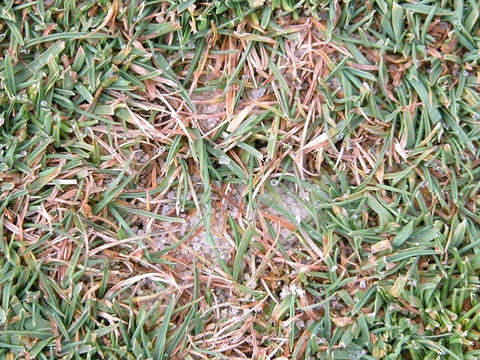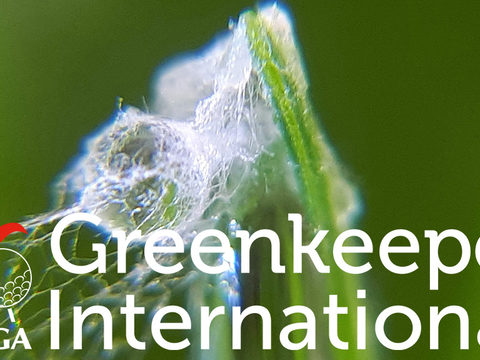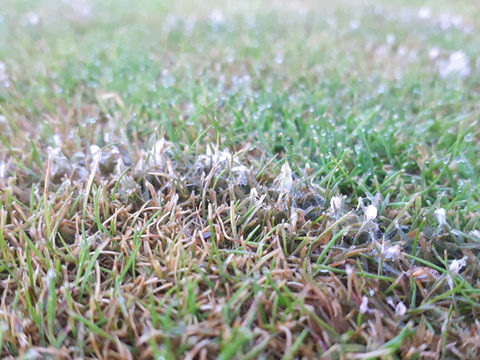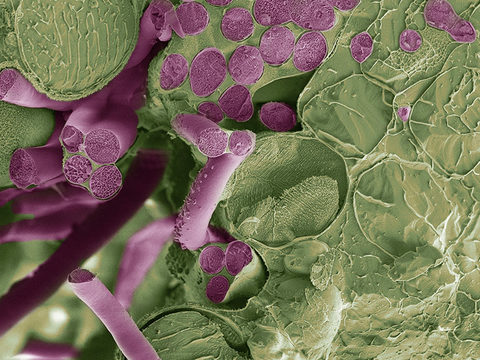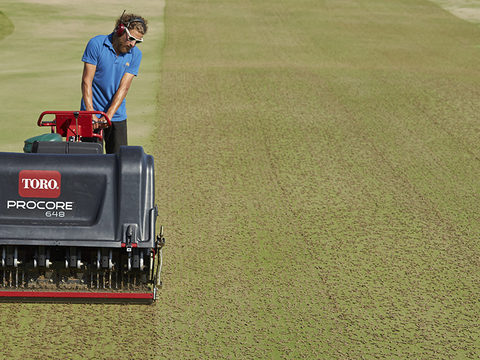Challenge of weather changes

Changing climatic conditions are putting ever greater pressure on turf management all through the year, and it is set to get worse within the working career of today’s greenkeepers.
Meteorological science indicates the clear trend to warmer weather patterns, but possibly more significant for immediate turf management is the greater frequency and duration of extremes and events, warns Syngenta Technical Manager, Glenn Kirby.
This autumn's weather switch, from ultra dry September to a soaking October, has been symptomatic of rapid changes in climate patterns.
Whilst studies of weather records on GreenCast and other source data has revealed the warming temperatures, that in itself is unlikely to see any wholesale short term shift in aspects such as introducing warm season grasses or Mediterranean turf management techniques, for example.
However, whilst overall temperatures are gradually rising, we have seen a distinct move towards significantly warmer autumn and early winter conditions, with limited cold weather until January or February. That has really focused attention on actions to protect turf through protracted high risk period in November and December (Fig 1 – GreenCast Historic Disease Charts).
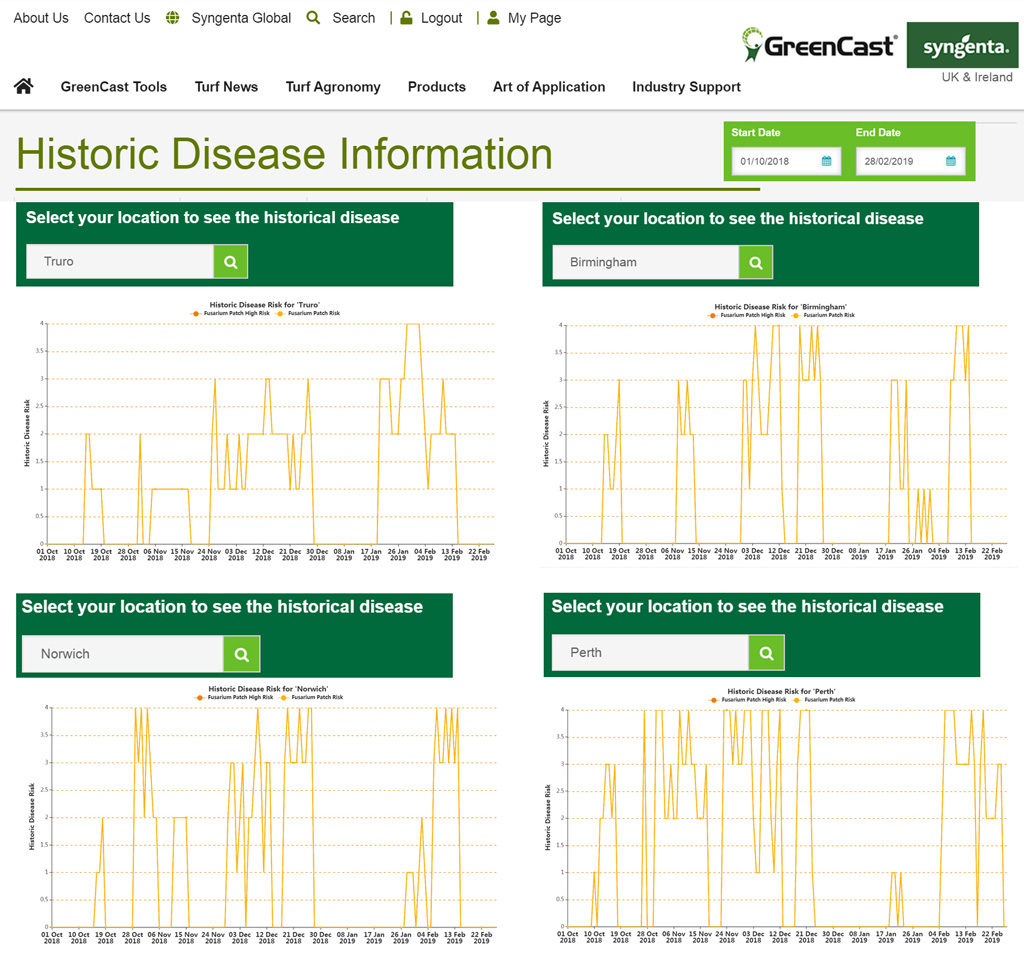
Turf managers are going to have to respond quickly to these changing trends and seasonal anomalies. The studies have also picked out regional variation, with greatest changes and extremes in the south and west – which are most adversely affected by coastal weather streams. This is likely to further increase the differences between managing turf in Falmouth or Inverness, for example.
Adopting new technologies and Integrated Turf Management (ITM) techniques better designed and fully researched to reflect these changing conditions will be more important than ever. There is going to be no let-up in ITM all year round.
The crucial importance of ITM has been demonstrated in STRI trials (Fig 2. – Medallion TL ITM trials results). Managed under good ITM practice over the winter, a calculated nutrition programme was effective at suppressing low pressure disease levels at 7 to 10% through the early part of the winter. When disease pressure ramped up to 25%+ on untreated turf, however, the good practices needed to be augmented with fungicide application to cut disease level to less than 2% and maintain high surface quality.
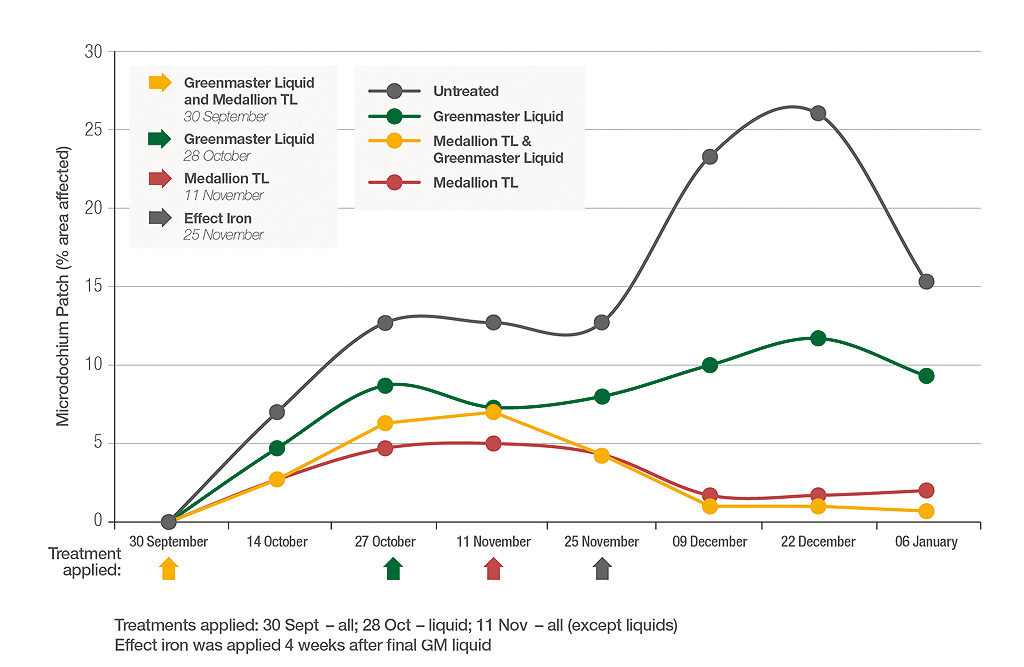
With rapidly fluctuating weather conditions, greenkeepers are going to need to be more adept at predicting periods of risk, and using their experience to decide when to spray. Independent R&D trials have consistently shown that today’s fungicide chemistry is more effective when applied preventatively, compared to curative applications when disease has got into the plant.
Fortunately, short-term weather forecasting is getting ever more accurate and reliable at seeing events conducive to disease.
Furthermore, the development of more sophisticated disease modelling programmes can adaptively predict localised risks and recommend appropriate actions.
It does mean that when practices that impact on turf stress occur, such as renovation, the greater risk of an adverse weather event will require a focussed pro-active ITM approach to prevent disease outbreaks and ensure faster recovery (See Greenkeeper Int. Insight – August 2019).
Also, environmental abiotic stresses as a result of weather patterns will also need to be better evaluated through ITM research trials, and their impacts on turf health fully understood.

For example, weather changeability means you are more likely to need a wetting agent programme that will both conserve soil moisture and make more efficient use of available water resources during protracted hot, dry spells, but also has the capability to move excess rain away from the surface quickly when extreme summer rainfall events occur.
It is increasingly apparent that you can no longer rely on a hard cold snap to reduce disease infection risk. And, as seen with this season’s weather patterns and disease incidence, infections of microdochium patch that had hitherto been considered primarily a winter issue, were breaking out right through the summer and creating a reservoir infection for the autumn.
Now, an increasingly important part of ITM disease management will be reducing the levels of pathogen in and around the turf, such that it is more resilient to infection during weather induced risk periods.
That will include thatch removal to reduce the initial source of the inoculum and removing the surface water layer conducive to disease, along with targeted applications of Medallion TL. That has been shown to target spores in the crown and thatch area, as well as contact protection on the leaf to prevent spores initially getting into the plant.
The positive news is that STRI trials have shown that fungicides applied preventatively at periods of high risk according to disease risk models, can maintain cleaner and higher quality turf from fewer applications over the course of the season, compared to fire-brigade treatment at the first signs of infection or simply routine application.
Of more immediate concern, changing weather patterns is likely to see new pest and disease challenges for turf. Already soil pest populations, such as chafer grubs, have shifted in species numbers, area infested and lifecycle timings, whilst different diseases, such as Dollar spot, appear to be more widespread and causing greater damage.
Continued investment in new R&D will be required to continue to adapt existing techniques and to bring new tools for turf managers. Equally important will be the skills and experience to recognise the changes happening, and to effectively adopt new solutions.
Click here or on the image below to read more of the Greenkeeper International InSight features





